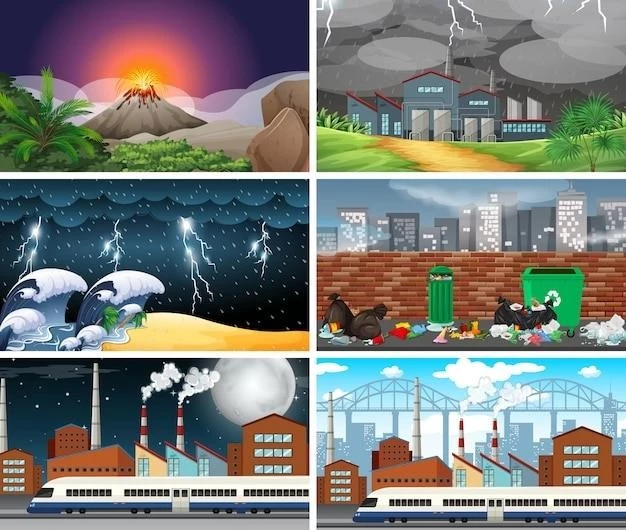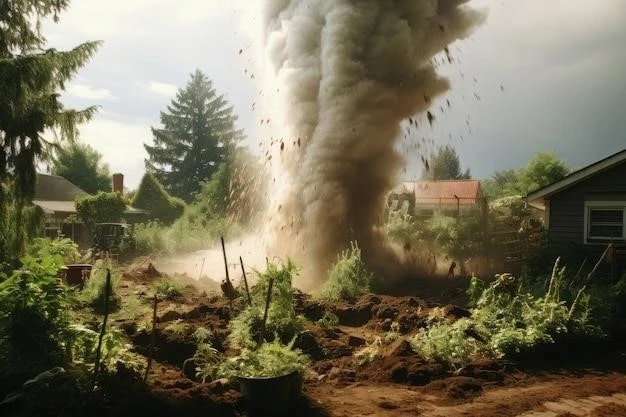Natural disasters are a stark reminder of the immense power of nature and the vulnerability of human civilization. These events, often unpredictable and devastating, are a result of complex geological and meteorological processes occurring on our planet. Understanding the science behind these events is not only crucial for predicting and mitigating their impact but also for fostering a deeper respect for the forces that shape our world.
Geological Disasters: Earth’s Unstable Crust
The Earth’s crust, far from being a solid, immutable shell, is a dynamic system of interconnected tectonic plates in constant motion. This movement, driven by the planet’s internal heat, is the engine behind some of the most awe-inspiring and destructive geological events.
Earthquakes: When the Ground Shakes
Earthquakes occur when tectonic plates collide, separate, or slide past each other. The immense pressure built up along these fault lines is suddenly released, sending seismic waves rippling through the Earth. The intensity of an earthquake is measured on the Richter scale, with each whole number representing a tenfold increase in wave amplitude.
- Focus and Epicenter: The focus is the point within the Earth where the earthquake originates, while the epicenter is the point on the Earth’s surface directly above the focus;
- Seismic Waves: Different types of seismic waves, including primary waves (P-waves) and secondary waves (S-waves), travel at different speeds and cause different types of ground motion.
- Aftershocks: Earthquakes are often followed by aftershocks, which are smaller earthquakes that occur as the crust adjusts to the displacement caused by the main shock.
Volcanic Eruptions: Fiery Fury from Below
Volcanoes are vents in the Earth’s crust where molten rock, ash, and gases escape from the planet’s interior. These eruptions can be explosive or effusive, depending on the viscosity of the magma and the amount of dissolved gases.
- Types of Volcanoes: Volcanoes are classified based on their shape and eruptive style, including shield volcanoes, stratovolcanoes, and cinder cone volcanoes.
- Volcanic Hazards: Eruptions pose numerous hazards, including pyroclastic flows (fast-moving currents of hot gas and volcanic matter), lahars (mudflows), ashfall, and volcanic gases.
- Volcanic Monitoring: Scientists monitor volcanoes for signs of unrest, such as changes in gas emissions, ground deformation, and seismic activity, to predict eruptions and mitigate their impact.
Tsunamis: Waves of Unfathomable Power
Tsunamis are giant waves, often triggered by undersea earthquakes or volcanic eruptions, that can travel across entire oceans at speeds of up to 500 miles per hour. As these waves approach the shore٫ they slow down and grow in height٫ inundating coastal areas with devastating force.
- Tsunami Formation: Tsunamis are generated by the displacement of a large volume of water, typically due to the vertical movement of the seafloor during an earthquake or volcanic eruption.
- Tsunami Warning Systems: Early warning systems use a network of buoys and sensors to detect tsunamis and alert coastal communities, giving them time to evacuate to higher ground.
- Tsunami Mitigation: Coastal communities can mitigate the impact of tsunamis through land-use planning, building codes, and the construction of seawalls and other protective structures.
Meteorological Disasters: The Fury of the Atmosphere
The Earth’s atmosphere is a dynamic system driven by solar radiation, the planet’s rotation, and the distribution of land and water. These factors interact to create a wide range of weather patterns, some of which can become extreme and destructive.
Hurricanes: Perfect Storms of Wind and Rain
Hurricanes are powerful tropical cyclones that form over warm ocean waters. These storms are characterized by low atmospheric pressure, high winds, heavy rainfall, and storm surges (abnormally high tides);
- Hurricane Formation: Hurricanes form when warm, moist air over the ocean rises and is replaced by cooler air, creating a cycle of rising and rotating air masses.
- Hurricane Categories: Hurricanes are classified into five categories based on their wind speed, with Category 5 hurricanes being the most intense.
- Hurricane Tracking and Forecasting: Meteorologists use satellites, radar, and computer models to track hurricanes and predict their path and intensity.
Tornadoes: Violent Twisters of Destruction
Tornadoes are violently rotating columns of air that extend from thunderstorms to the ground. These storms are characterized by their funnel-shaped clouds and extremely high wind speeds, which can exceed 300 miles per hour.
- Tornado Formation: Tornadoes form when warm, humid air collides with cold, dry air, creating an unstable atmosphere. Strong updrafts and wind shear (changes in wind speed and direction with height) contribute to tornado development.
- Tornado Alley: The central United States, particularly the region known as “Tornado Alley,” is prone to tornadoes due to its unique geography and weather patterns.
- Tornado Safety: Seek shelter immediately in a basement or interior room on the lowest floor of a sturdy building. Stay away from windows and exterior walls.
Floods: When Water Overwhelms the Land
Floods occur when water overflows its natural boundaries, inundating normally dry land. They can be caused by heavy rainfall, rapid snowmelt, dam failures, or coastal storm surges.
- Types of Floods: Floods are classified based on their cause and duration, including flash floods, river floods, coastal floods, and urban floods.
- Floodplains: Floodplains are low-lying areas adjacent to rivers and streams that are prone to flooding. Building on floodplains increases the risk of flood damage.
- Flood Mitigation: Flood mitigation measures include dams and levees to control water flow, floodplain management, and early warning systems.

Climate Change: Amplifying the Risks
Climate change, driven by human activities that release greenhouse gases into the atmosphere, is altering Earth’s climate system, leading to rising global temperatures, changing precipitation patterns, and more extreme weather events. These changes are exacerbating the frequency and intensity of many natural disasters.
- Sea Level Rise: Rising sea levels, caused by thermal expansion of ocean water and melting glaciers, are increasing the risk of coastal flooding and erosion.
- Intensified Hurricanes: Warmer ocean temperatures provide more energy for hurricane formation, potentially leading to more intense storms with higher wind speeds and heavier rainfall.
- Increased Flood Risk: Changes in precipitation patterns, including more frequent and intense rainfall events, are increasing the risk of flooding in many parts of the world.

Conclusion: Respecting the Power of Nature
Natural disasters are a stark reminder of the immense power of nature and the importance of understanding and respecting the forces that shape our planet. By studying these events, we can develop better prediction and mitigation strategies, build more resilient communities, and foster a deeper appreciation for the delicate balance of Earth’s systems.










